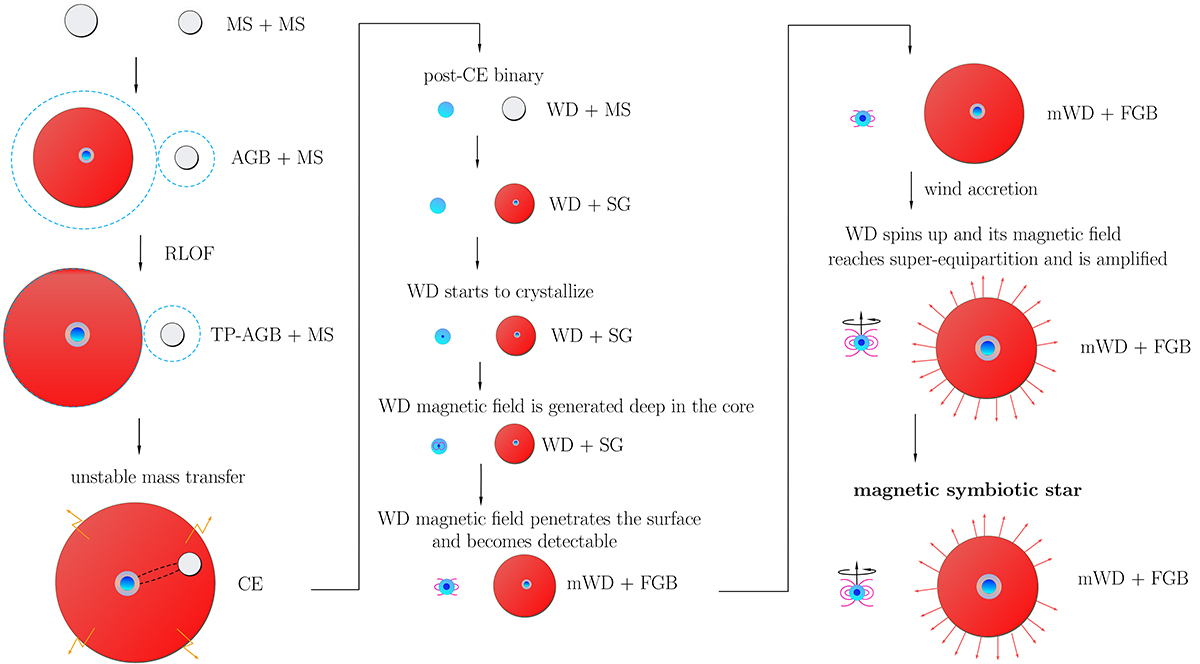Fig. 1.

Download original image
Schematic illustrating the formation channel of FN Sgr. A non-magnetic WD is first formed through CE evolution when the more massive star in the binary fills its Roche lobe as a TP-AGB star. The companion of the WD in the resulting post-CE binary evolves and becomes a sub-giant. Meanwhile, the WD ages and begins to crystallize, which creates the conditions for a weak magnetic field to be generated. The magnetic field initially remains deep inside the core but eventually, after a few hundred million years, diffuses and penetrates the surface, becoming detectable. In the meantime, the sub-giant star evolves, becomes an evolved FGB star, and starts to transfer some mass and angular momentum through stellar winds to the WD. As a result of the angular momentum accretion, the WD spin period decreases to minutes, and its magnetic field reaches the super-equipartition regime and is amplified, according to the rotation- and crystallization-driven dynamo. Subsequently, the binary evolves to a SySt, hosting a magnetic WD that is accreting matter through atmospheric Roche-lobe overflow.
Current usage metrics show cumulative count of Article Views (full-text article views including HTML views, PDF and ePub downloads, according to the available data) and Abstracts Views on Vision4Press platform.
Data correspond to usage on the plateform after 2015. The current usage metrics is available 48-96 hours after online publication and is updated daily on week days.
Initial download of the metrics may take a while.


